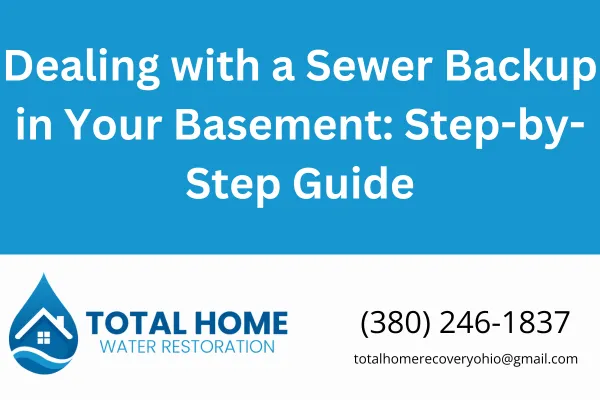
Dealing with a Sewer Backup in Your Basement: Step-by-Step Guide
Dealing with a Sewer Backup in Your Basement: Step-by-Step Guide
Sewer backup in your basement isn’t just gross—it’s dangerous. We're talking about contaminated water, potential structural damage, and serious health risks if it's not cleaned up fast and correctly.
If you’re dealing with a sewer backup in Grove City, Columbus, or nearby towns like Hilliard, Dublin, or Reynoldsburg, here’s what you need to know—and do—right now.
Step 1: Stay Safe and Stop the Source
First, don’t touch the water. It may contain harmful bacteria or viruses from the sewer system. Wear gloves and boots if you must enter the area.
Turn off power to the basement (only if you can safely do so).
Don’t use plumbing fixtures until the problem is diagnosed.
Call your utility provider or city sewer department if you suspect a municipal issue.
If you’re unsure or smell gas, evacuate and call emergency services.
Step 2: Call a Licensed Water Damage Restoration Pro
Cleanup isn’t just about drying out the basement. You need:
Contaminated water removal
Sanitization and disinfection
Structural drying and dehumidification
Mold prevention and inspection
At Total Home Water Restoration, we handle all of it. We’re based in Grove City and serve the whole Columbus area—including Westerville, Pickerington, Worthington, and Upper Arlington.
We’re IICRC-certified and follow strict safety protocols for Category 3 water (that’s sewer water, by the way).
Step 3: Document the Damage for Insurance
Take photos or video of:
Water levels
Damaged personal items
Soaked walls, floors, and furniture
Call your insurance company and start a claim. We work directly with adjusters to document losses and back up every repair with code references and moisture readings.
Step 4: Begin the Cleanup Process
If you're waiting for a pro and need to start:
Don’t pump water too fast. Draining too quickly can cause foundation cracks.
Use fans and dehumidifiers only after a pro confirms it’s safe.
Remove wet items but store them for documentation.
Cut out soaked drywall or insulation. Mold starts growing fast—in 24–48 hours.
Step 5: Prevent It From Happening Again
Ask us about:
Installing a backwater valve
Sump pump checks and battery backups
Floor drain inspections
Waterproofing and grading improvements
Some of our customers in Grove City had repeat issues due to clogged main lines. We’ve helped them regrade yards, clean out root-blocked lines, and upgrade their sump pump systems—all things that help keep the water out.
FAQ: Sewer Backup in the Basement
Is sewer backup covered by insurance?
Sometimes—only if you have a sewer backup rider on your policy. Check with your provider.
Do I need to replace the drywall and carpet?
Yes. If it came in contact with sewer water, it’s considered contaminated and must be removed per IICRC standards.
How fast should I act?
Immediately. The longer it sits, the more damage—and risk—you face.
We’re Here to Help—24/7 Emergency Response
Total Home Water Restoration
📍 4141 Hoover Rd, Grove City, OH 43123
📞 380-246-1837
We fix it like it’s our own home. And we do it right.
